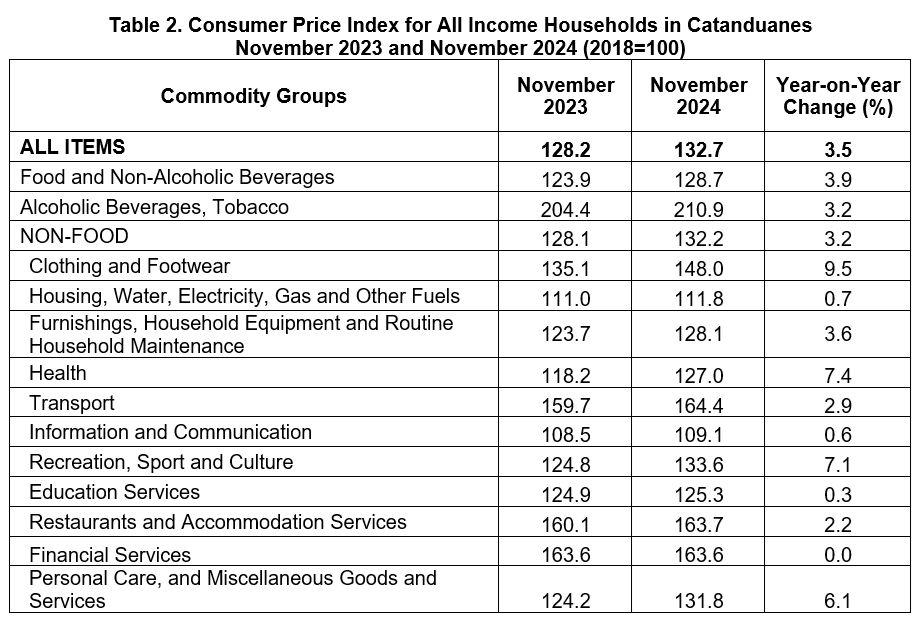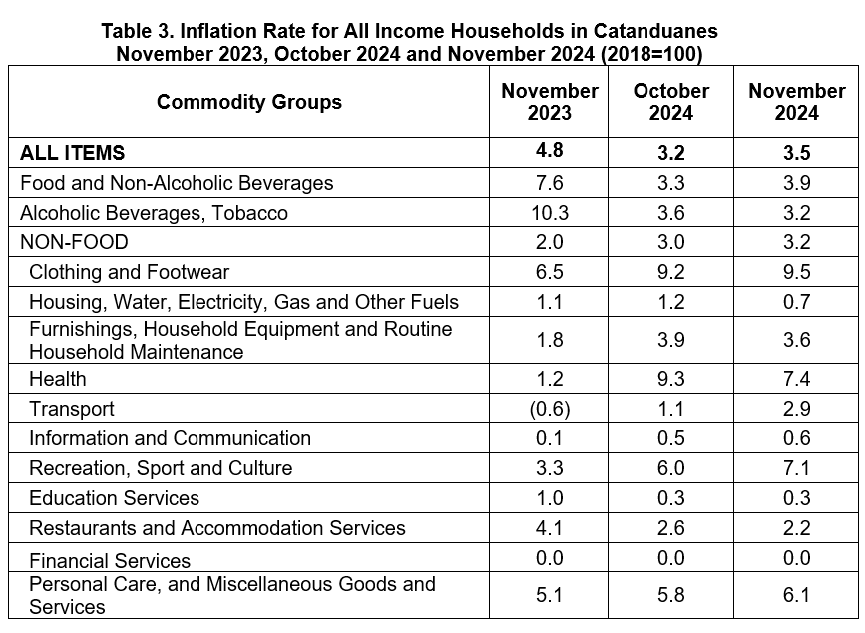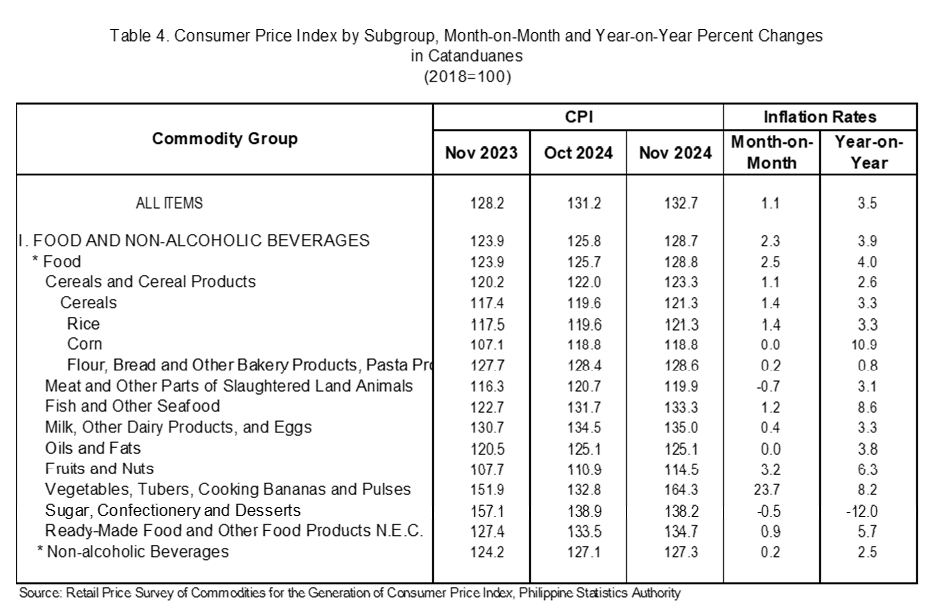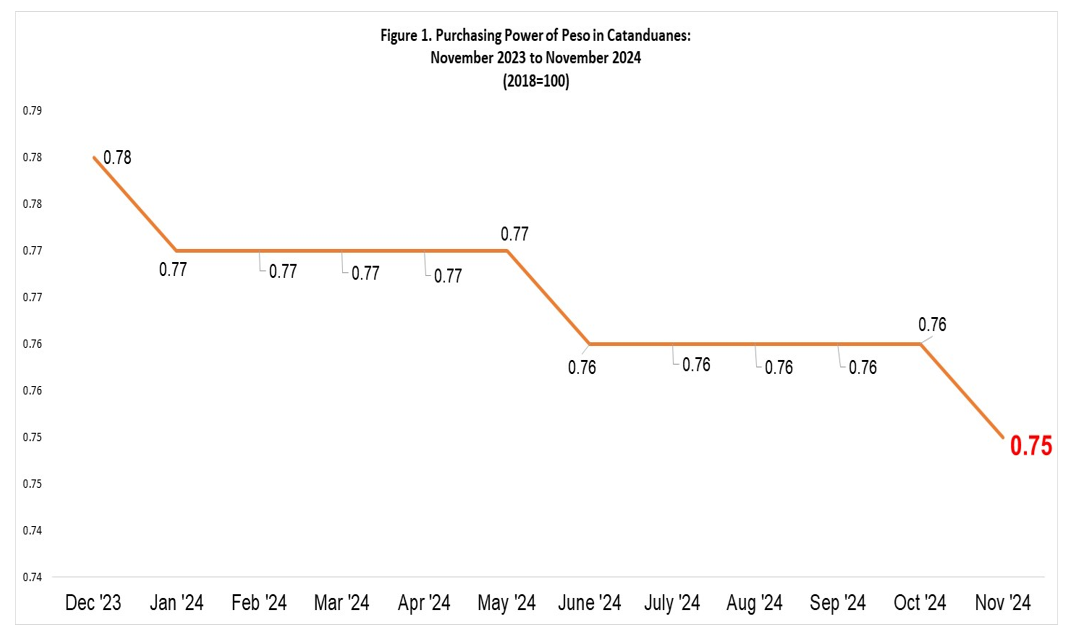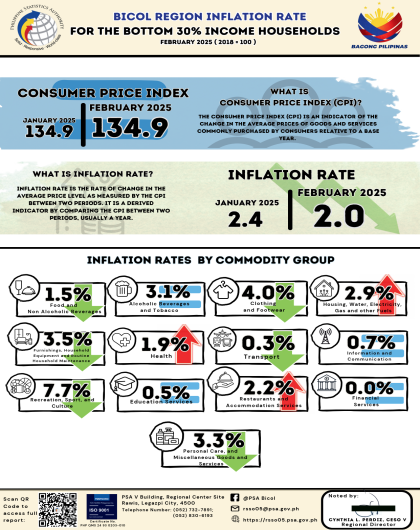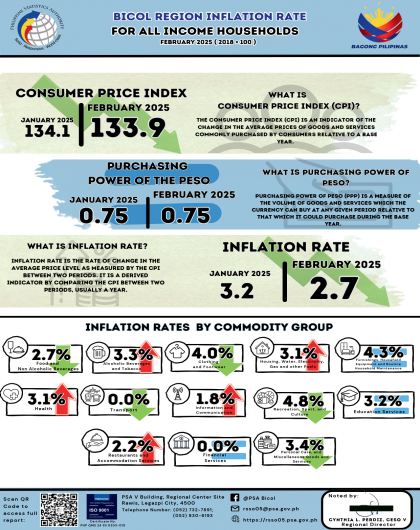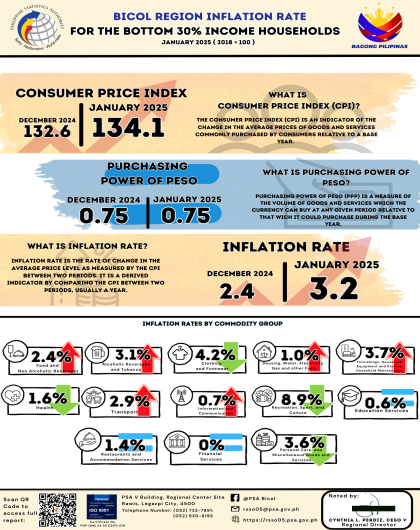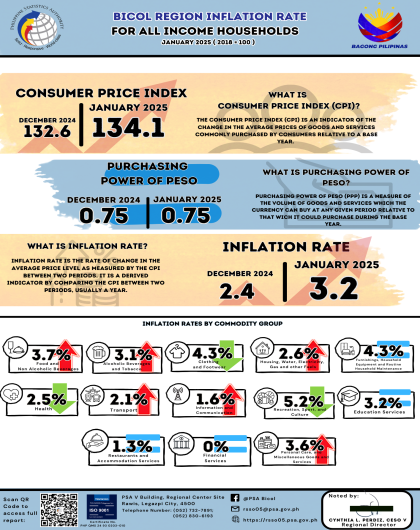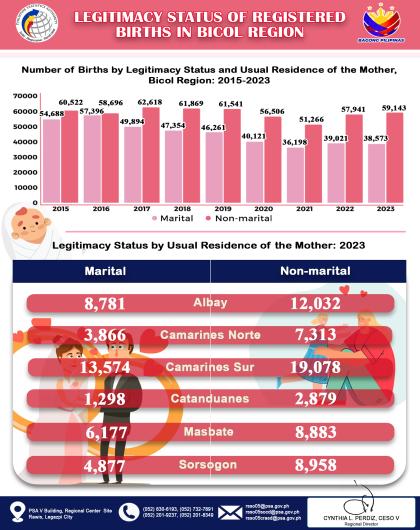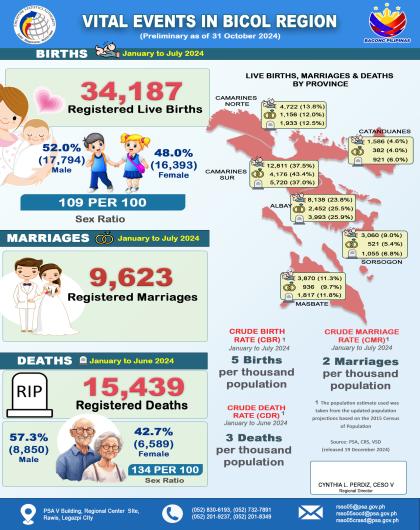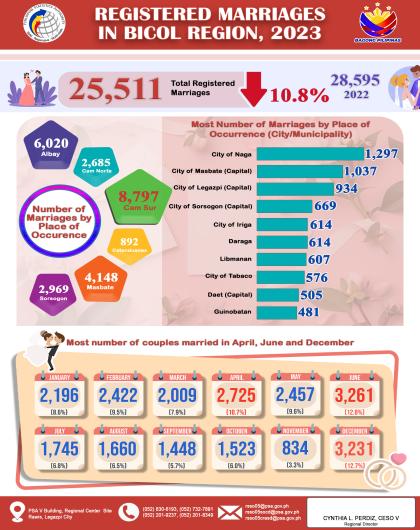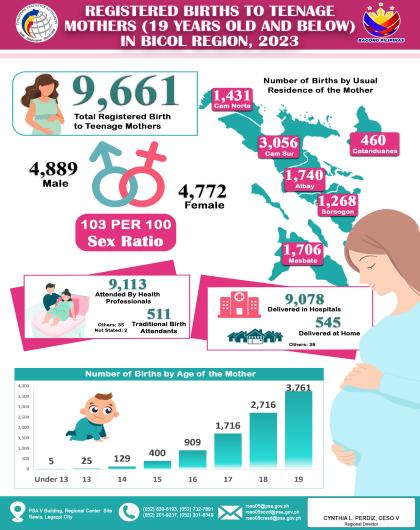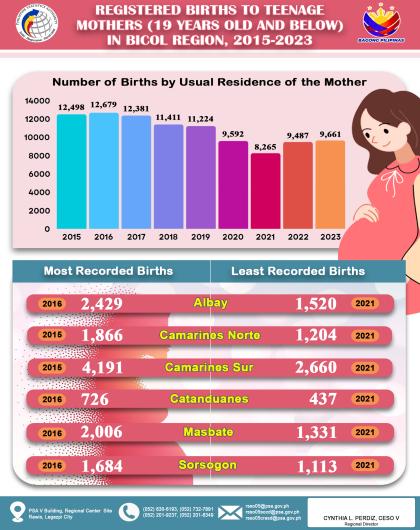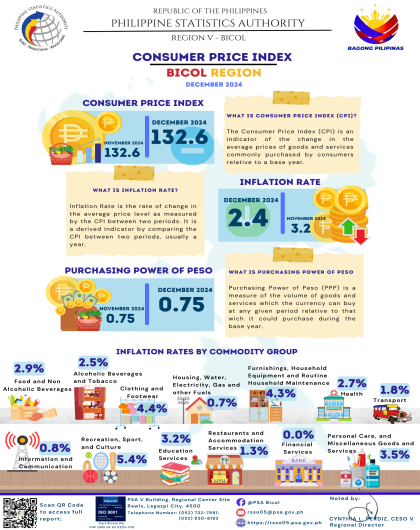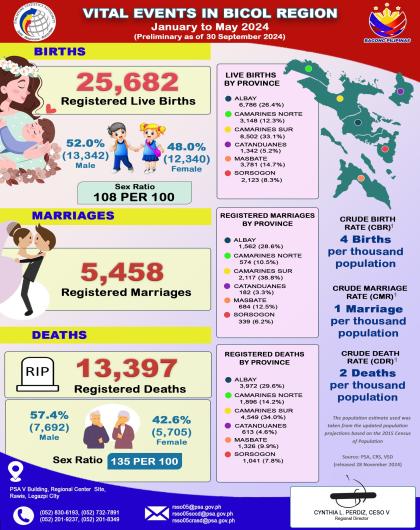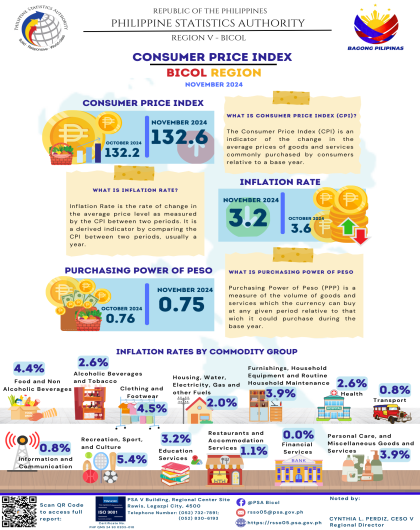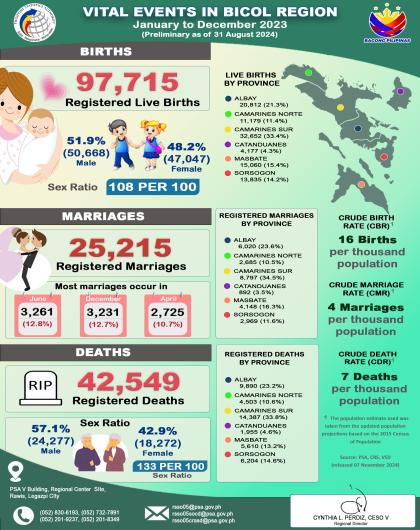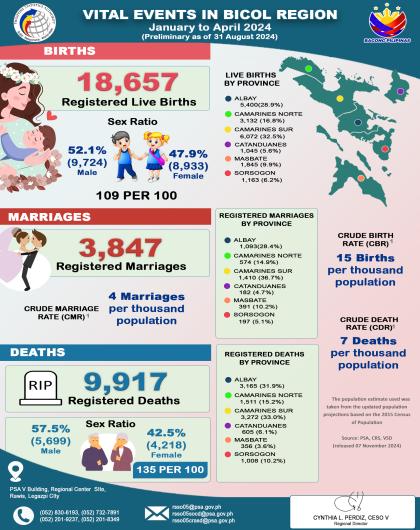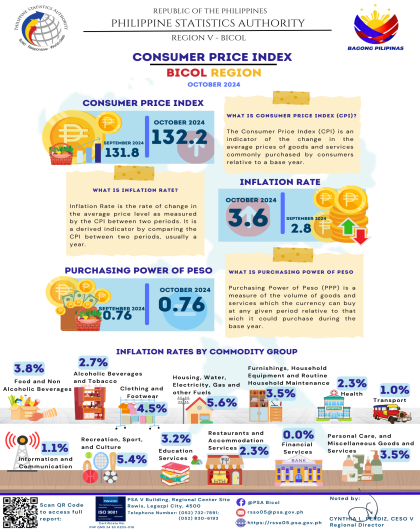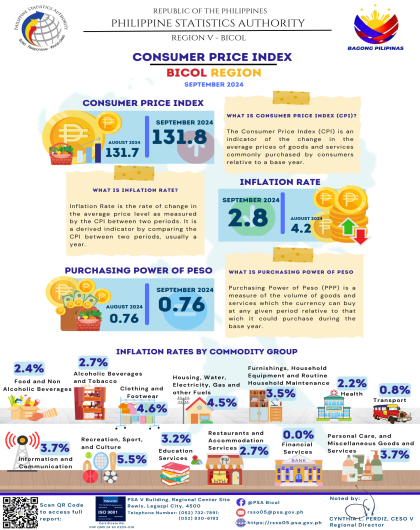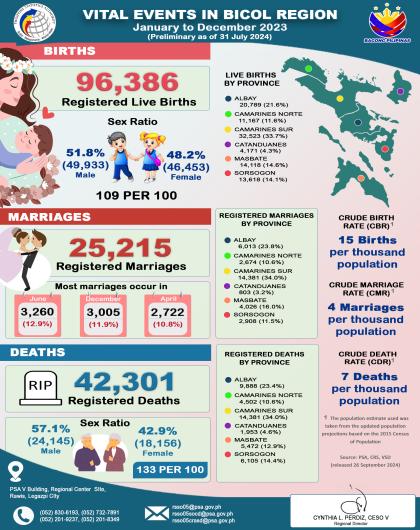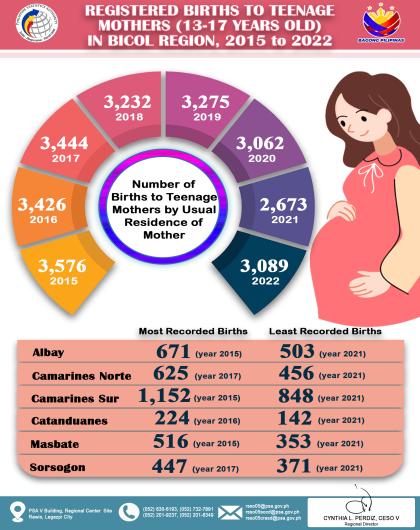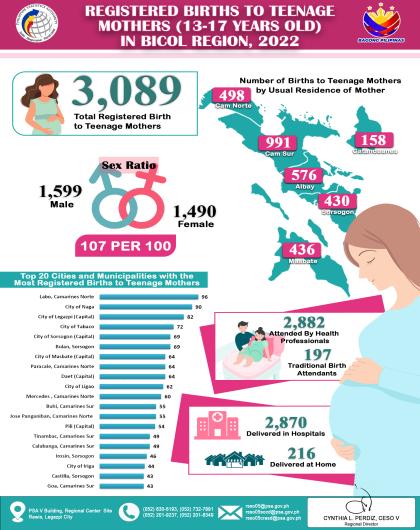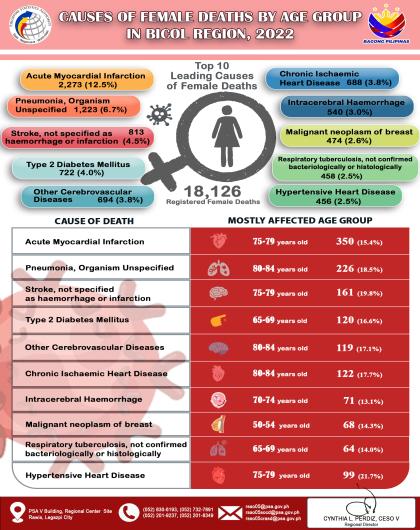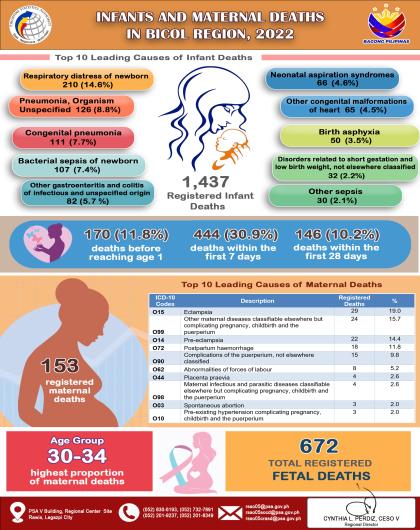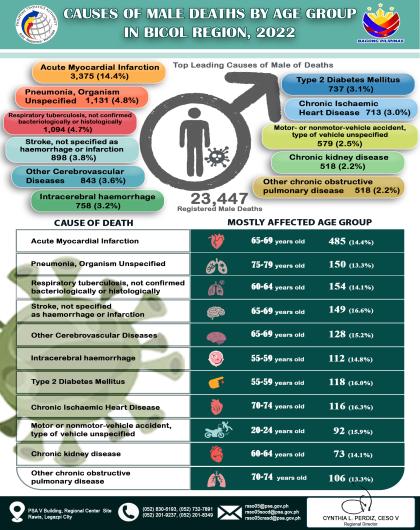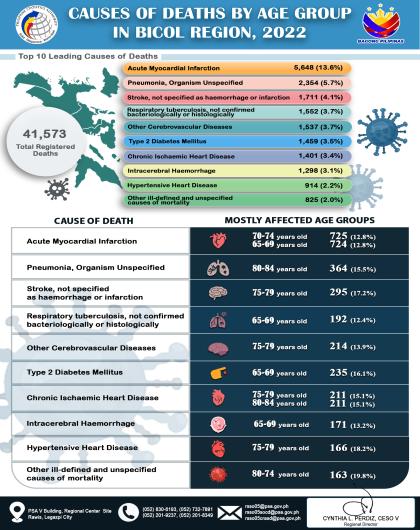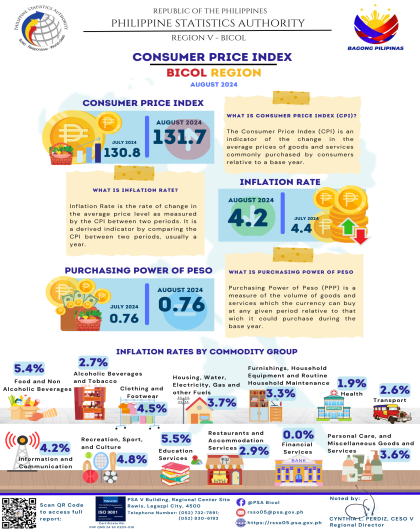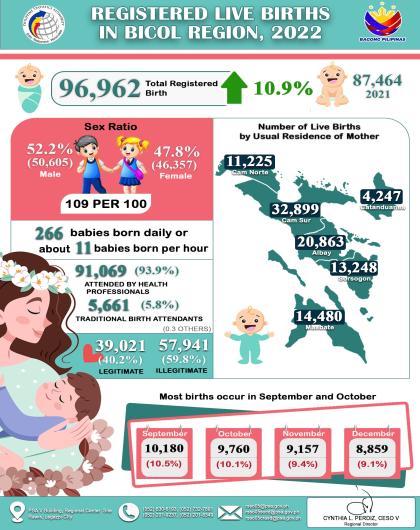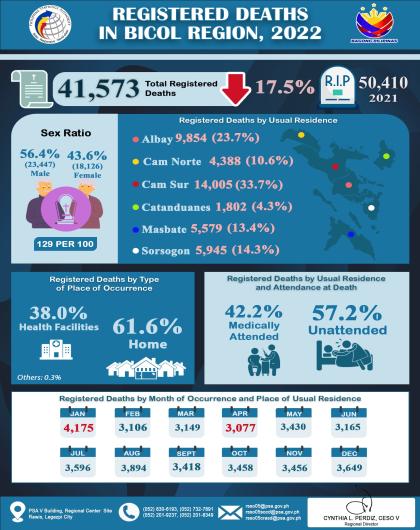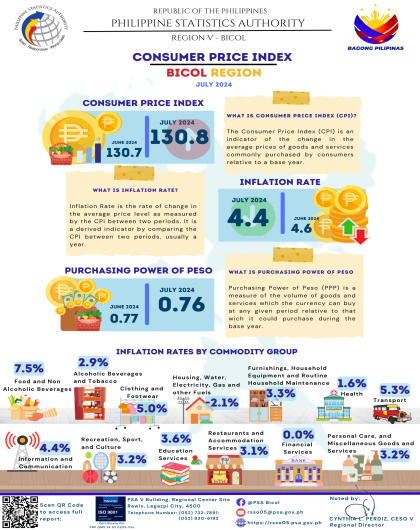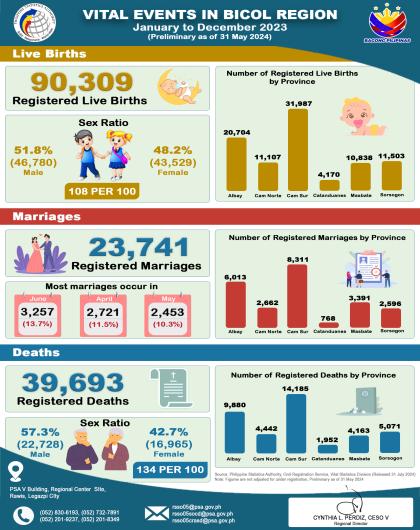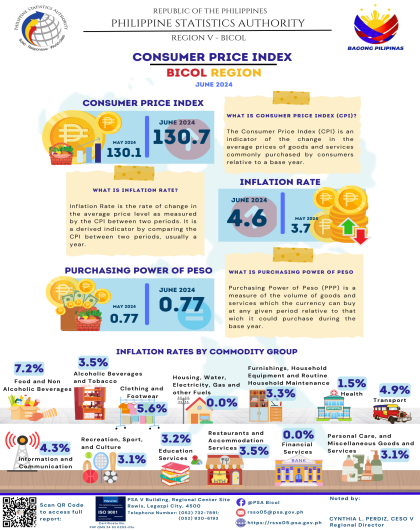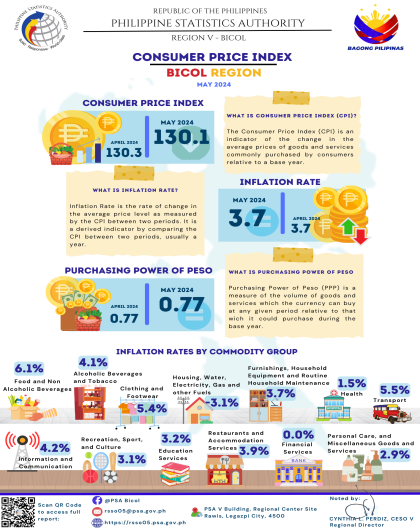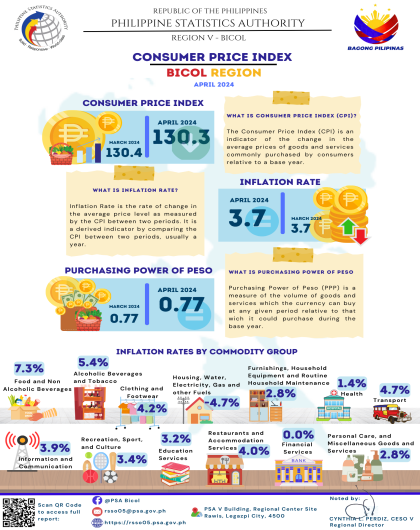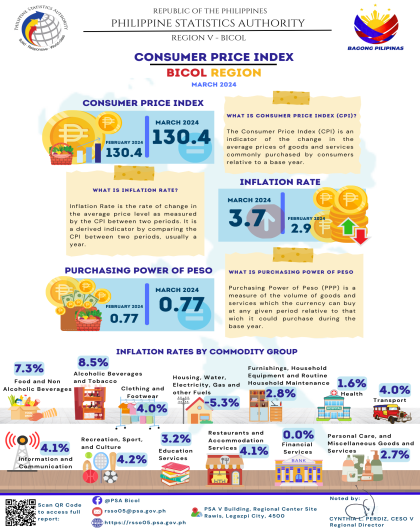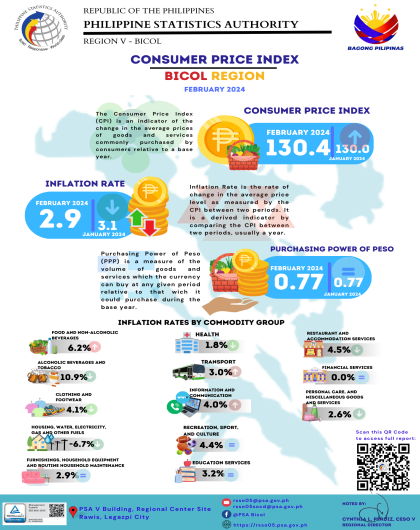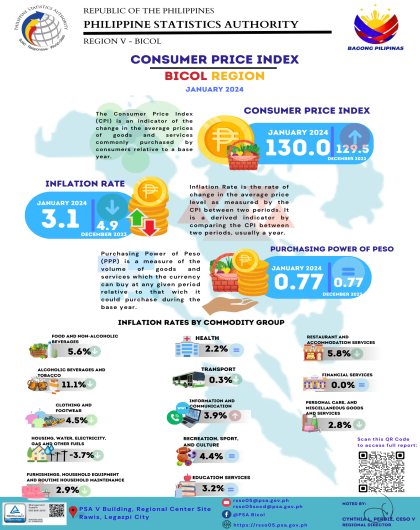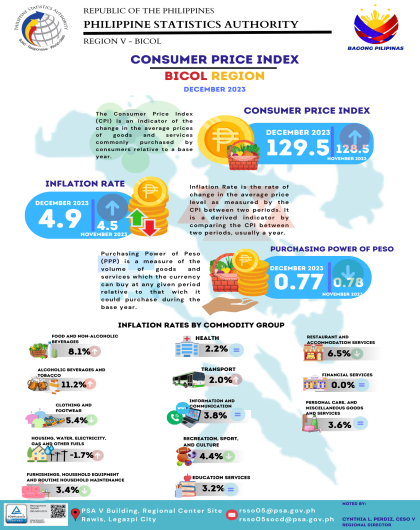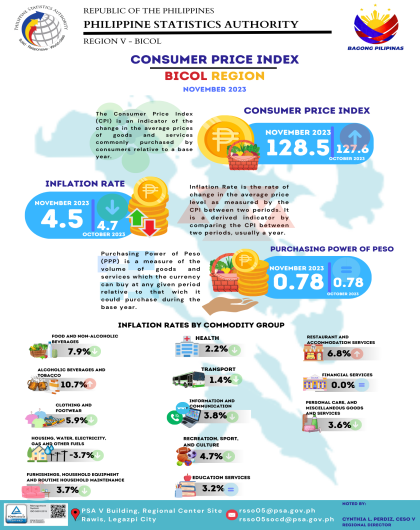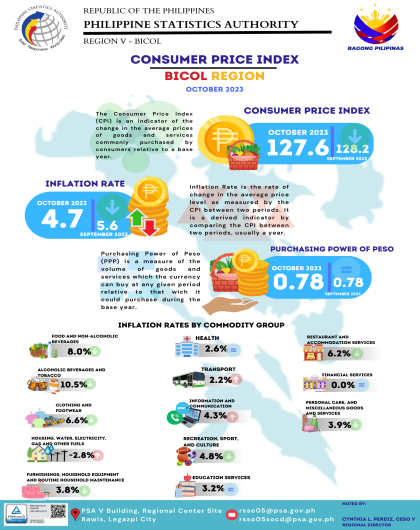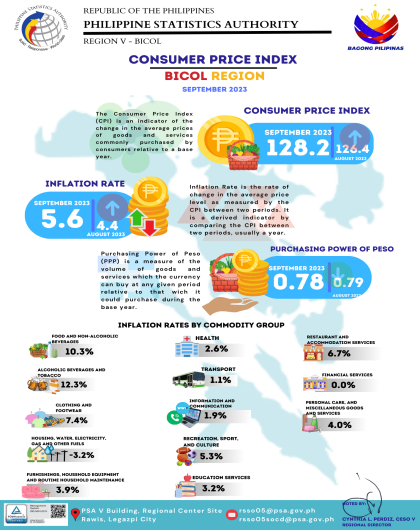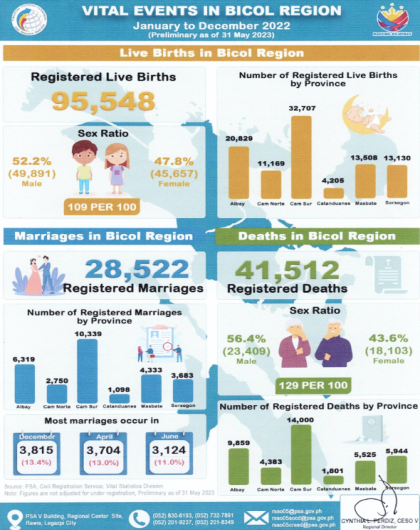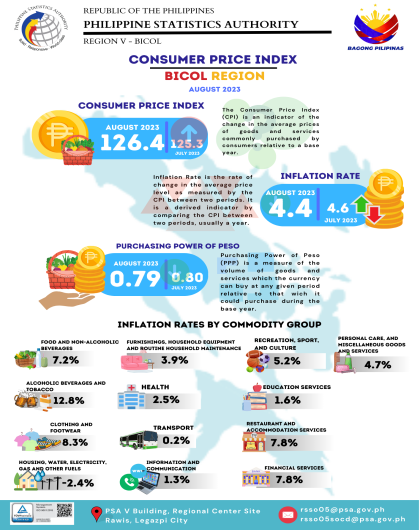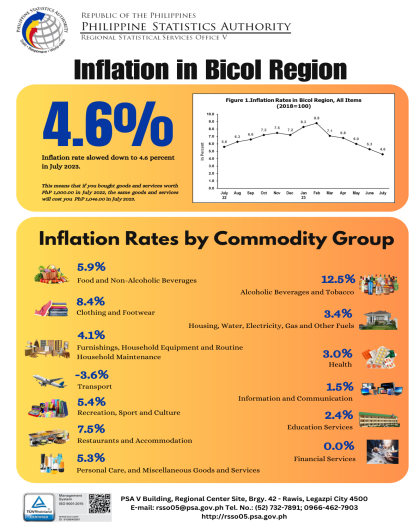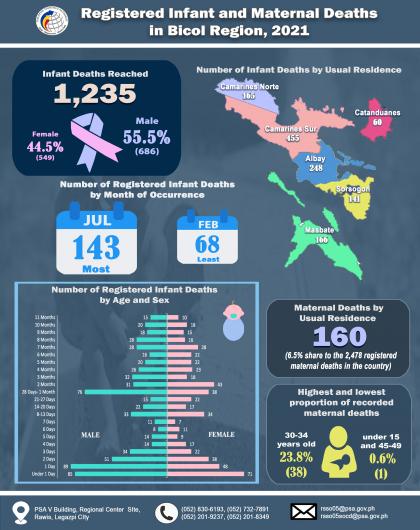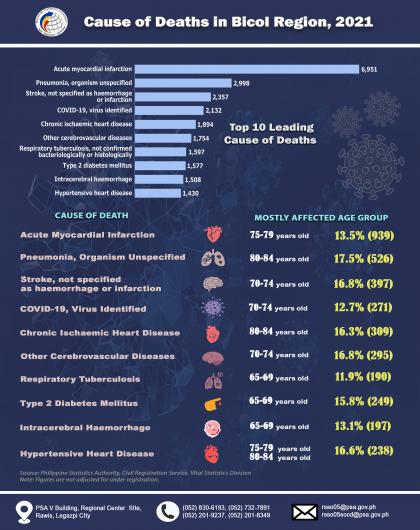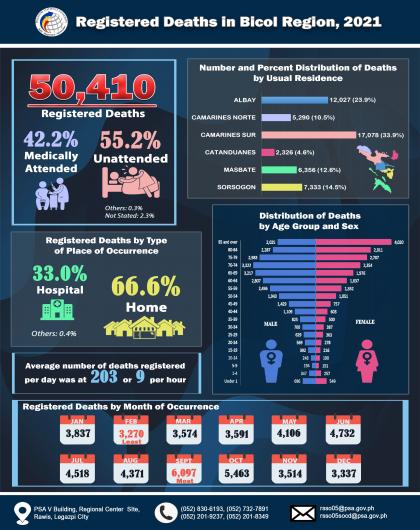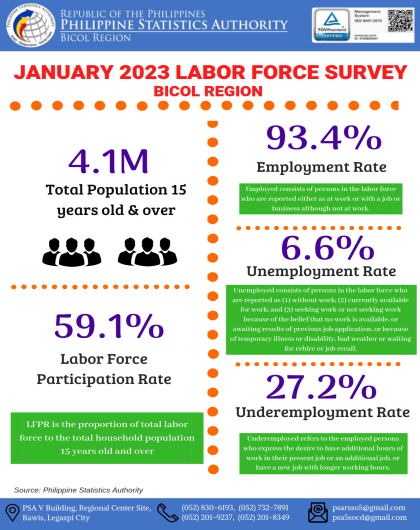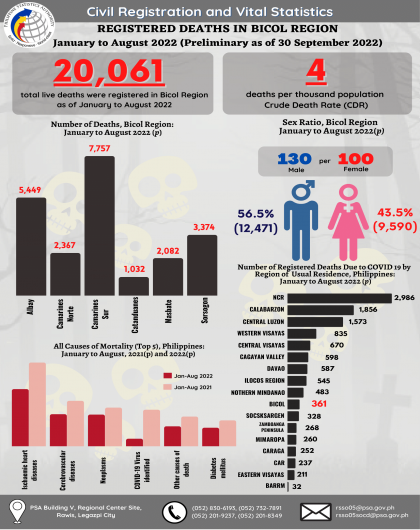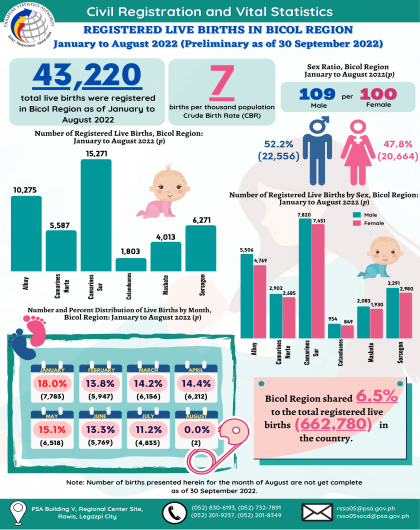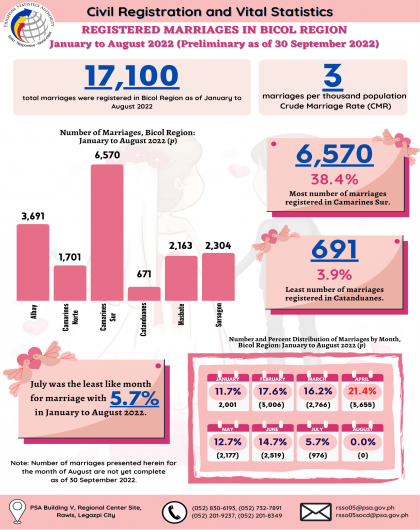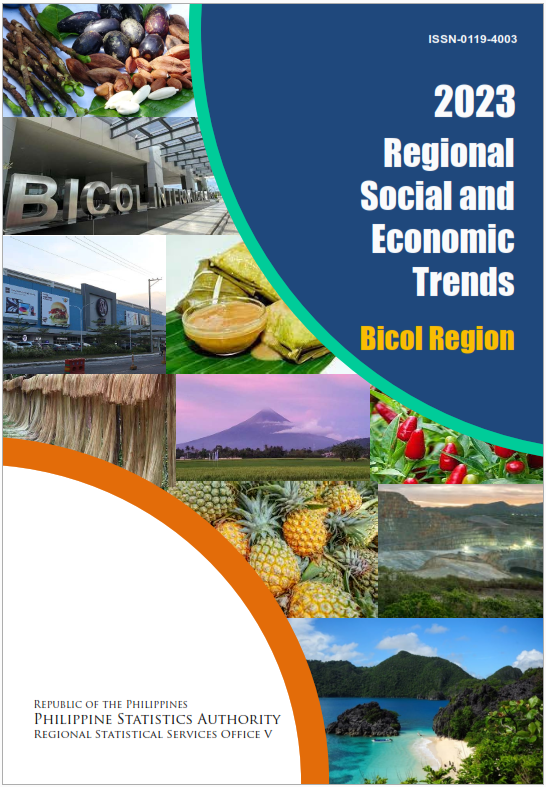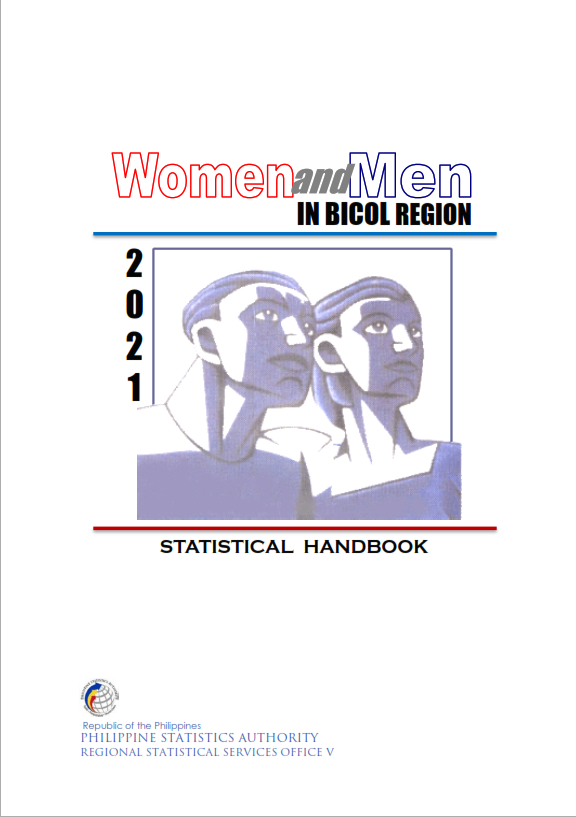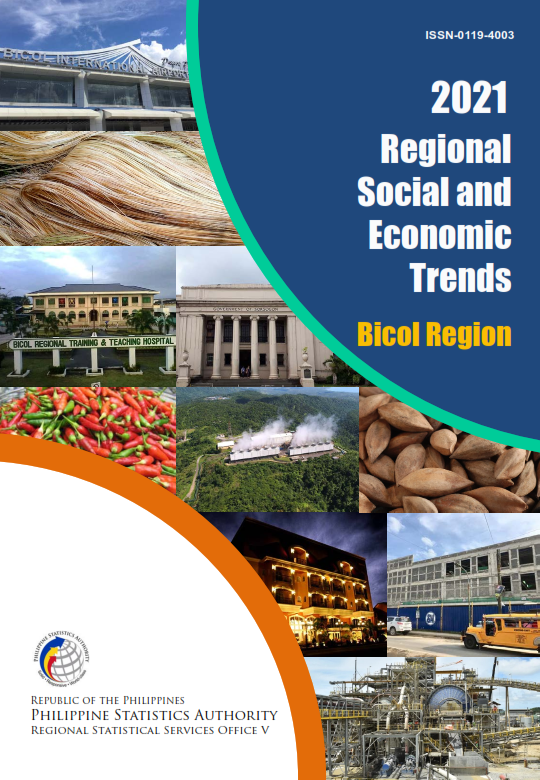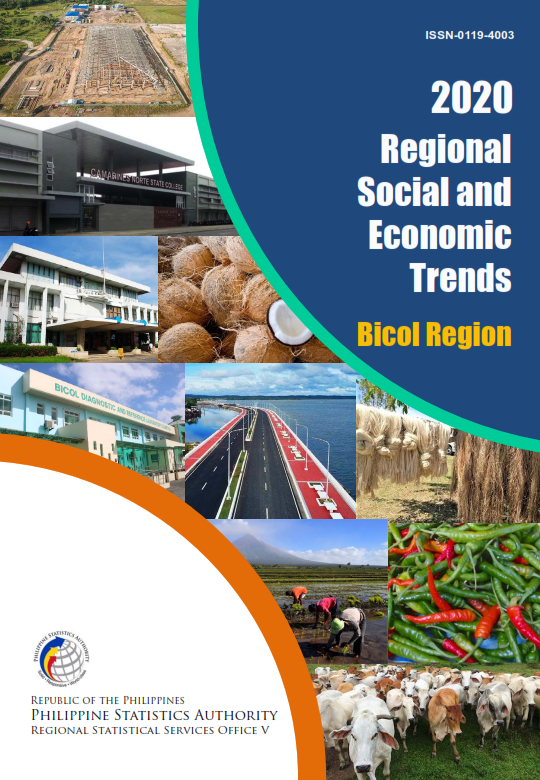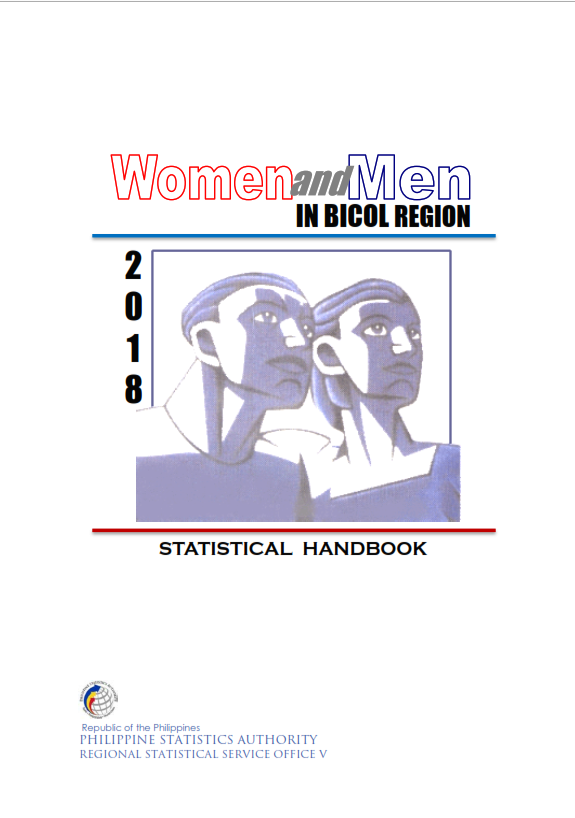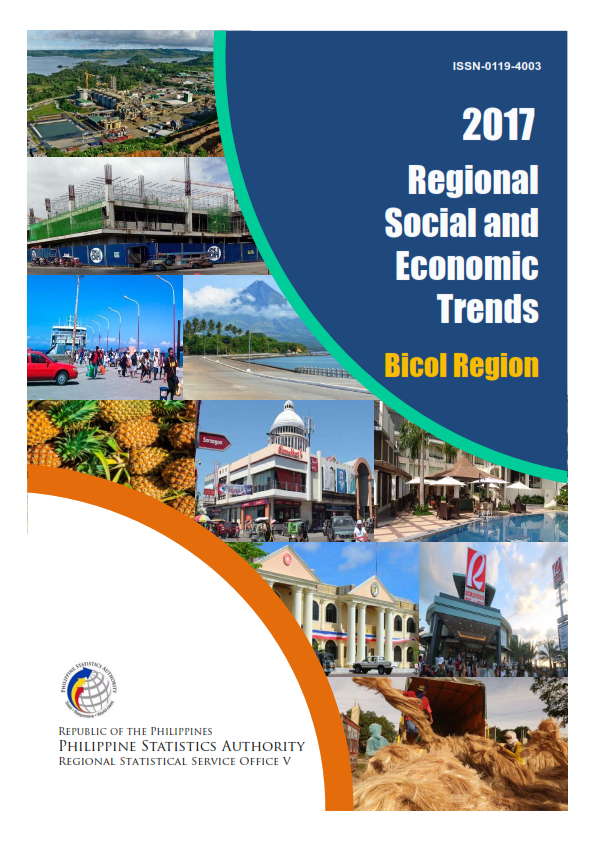
Headline Inflation
The province’s headline inflation or overall inflation increased to 3.5 percent in November 2024 from 3.2 percent in October 2024. This brings the provincial average inflation from January to November 2024 to 4.3 percent. In November 2023, inflation rate was higher at 4.8 percent.
Main Drivers to the Upward Trend of the Headline Inflation
The uptrend in the overall inflation in November 2024 was primarily influenced by the faster annual increment in the index of food and non-alcoholic beverages at 3.9 percent during the month from 3.3 percent in October 2024. Also contributing to the uptrend in the indices of transport with a higher year-on-year increase of 2.9 percent in November 2024 from 1.1 percent in October 2024.
Moreover, higher inflation rates during the month were also noted in the indices of the following commodity groups during the month:
a. Clothing and footwear, 9.5 percent from 9.2 percent;
Information and communication, 0.6 percent from 0.5 percent;
Recreation, sport and culture, 7.1 percent from 6.0 percent; and
- Personal care, and miscellaneous goods and services, 6.1 percent from 5.8 percent.
In contrast, the following commodity groups registered lower inflation rates during the month:
Alcoholic beverages and tobacco, 3.2 percent from 3.6 percent;
Housing, water, electricity, gas and other fuels, 0.7 percent from 1.2 percent;
Furnishings, household equipment and routine household maintenance, 3.6 percent from 3.9 percent;
Health, 7.4 percent from 9.3 percent; and
Restaurants and accommodation services, 2.2 percent from 2.6 percent.
The indices of education and financial services commodity group retained its previous month’s annual rates. (Table 3)
Main Contributors to the Headline Inflation
The top three commodity groups contributing to the November 2024 overall inflation were the following:
Food and non-alcoholic beverages with 52.7 percent share or 1.8 percentage points;
b. Clothing and footwear with 9.9 percent share or 0.4 percentage point; and
Personal care, and miscellaneous goods and services with 8.2 percent share or 0.3 percentage point.
Food Inflation
Food inflation at the provincial level increased to 4.0 percent in November 2024 from 3.3 percent in October 2024. In November 2023, food inflation was higher at 7.7 percent.
Main Drivers to the Upward Trend of Food Inflation
The acceleration of food inflation in November 2024 was mainly brought about by the year-on-year increase in vegetables, tubers, plantains, cooking bananas and pulses index at 8.2 percent in November 2024 from -13.3 percent in the previous month. The index of fish and other seafood also contributed to the uptrend with an inflation rate of 8.6 percent during the month from 3.3 percent in October 2024.
Higher inflation rates during the month were also noted in the indices of the following food commodity groups during the month:
Fruits and nuts, 6.3 percent from 0.4 percent;
Ready-made food and other food products, n.e.c, 5.7 percent from 5.4 percent;
Oils and fats, 3.8 percent from 3.1 percent;
Corn, 10.9 percent from 4.8 percent; and
Flour, bread and other bakery products, pasta products and other cereals, 0.8 percent from 0.5 percent.
Meanwhile, slower annual increase was noted in the indices of the following:
a. Rice, 3.3 percent from 12.6 percent;
Meat and other parts of slaughtered animals, 3.1 percent from 3.2 percent; and
c. Milk, other dairy products and eggs, 3.3 percent from 6.7 percent.\
A faster annual decrease in November 2024 was observed in the indices of sugar, confectionary and desserts with -12.0 percent during the month from -11.8 percent in previous month.
Main contributors to the Food Inflation
Food inflation shared 50.4 percent or 1.8 percentage points to the overall inflation in November 2024.
The top three food groups in terms of contribution to the food inflation during the month were the following:
Fish and other seafood with a share of 34.5 percent or 1.4 percentage points;
Cereals and cereal products, which includes rice, corn, flour, bread and other bakery products, pasta products, and other cereals, with a share of 24.0 percent or 1.0 percentage points; and
Vegetables, tubers, plantains, cooking bananas and pulses with a share of 14.9 percent or 0.6 percentage point.
